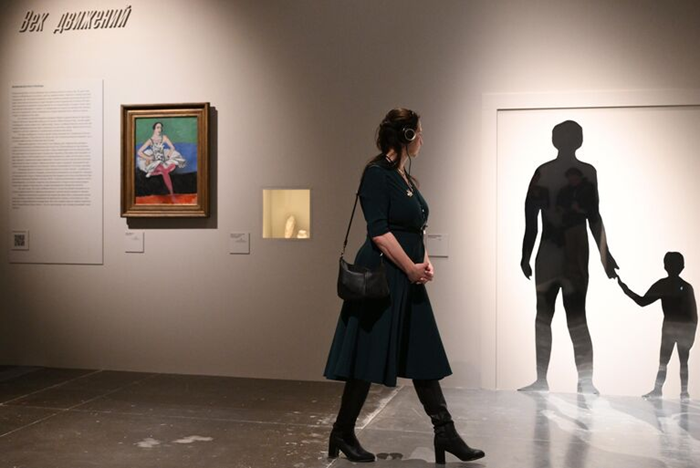The Jewish Museum and Tolerance Center has opened an exhibition entitled “Dance of the 20th Century. Matisse, Malevich, Diaghilev, Kandinsky and Others.” The complex title conceals a large-scale study of the history of dance and its connection with other forms of art.
Visitors to the Jewish Museum are greeted by Henri Matisse’s “Ballerina”. Like the famous “Dance”, which is almost impossible to get hold of for temporary exhibitions, this is one of the Hermitage’s masterpieces, only less well-known.
Painted in the mid-1920s, “Ballerina” was among the Soviet trophies taken from Germany after World War II. For many years, art historians outside the USSR considered the painting lost, although it was happily “resting” in storage. “Ballerina” was only released in the 1990s, and it only found a place in the Hermitage’s permanent exhibition in the early 2000s, so its mere presence in Moscow is an argument for visiting the Jewish Museum.
“Ballerina” and Galina Ulanova’s pointe shoes exhibited nearby rather deceive the viewer, because the exhibition is not only and not so much about ballet. Of course, the curators did not forget Diaghilev’s “Russian Seasons” with works by Bakst, Larionov and Goncharova – as well as stage costumes, including those of Ulanova. Nevertheless, “Dance of the 20th Century” is more a history of dance in ten halls, told from a variety of angles. Here are three unexpected chapters.

